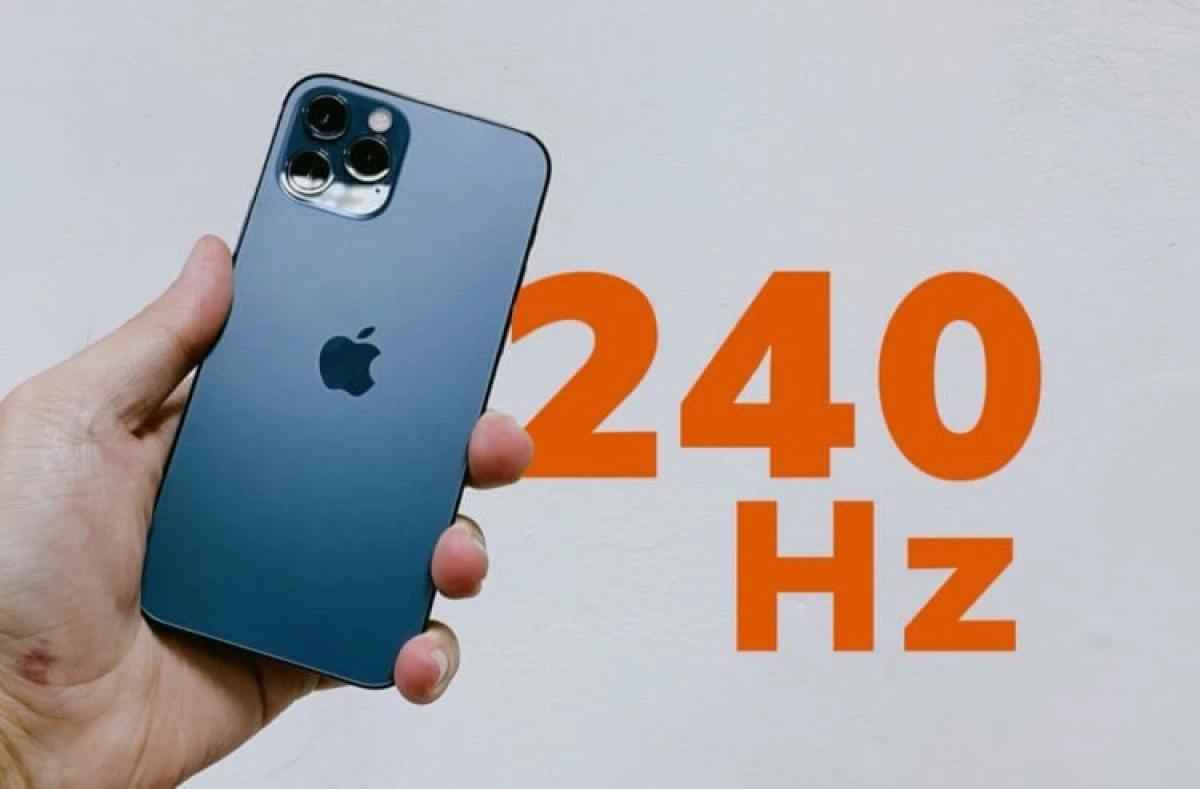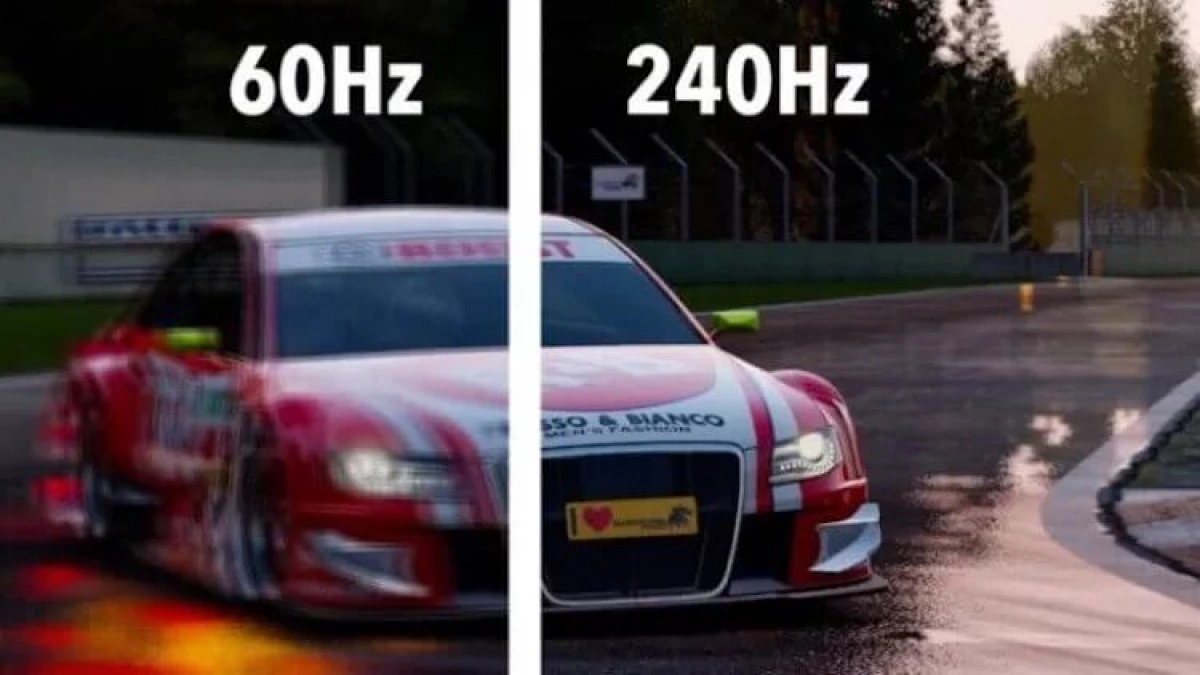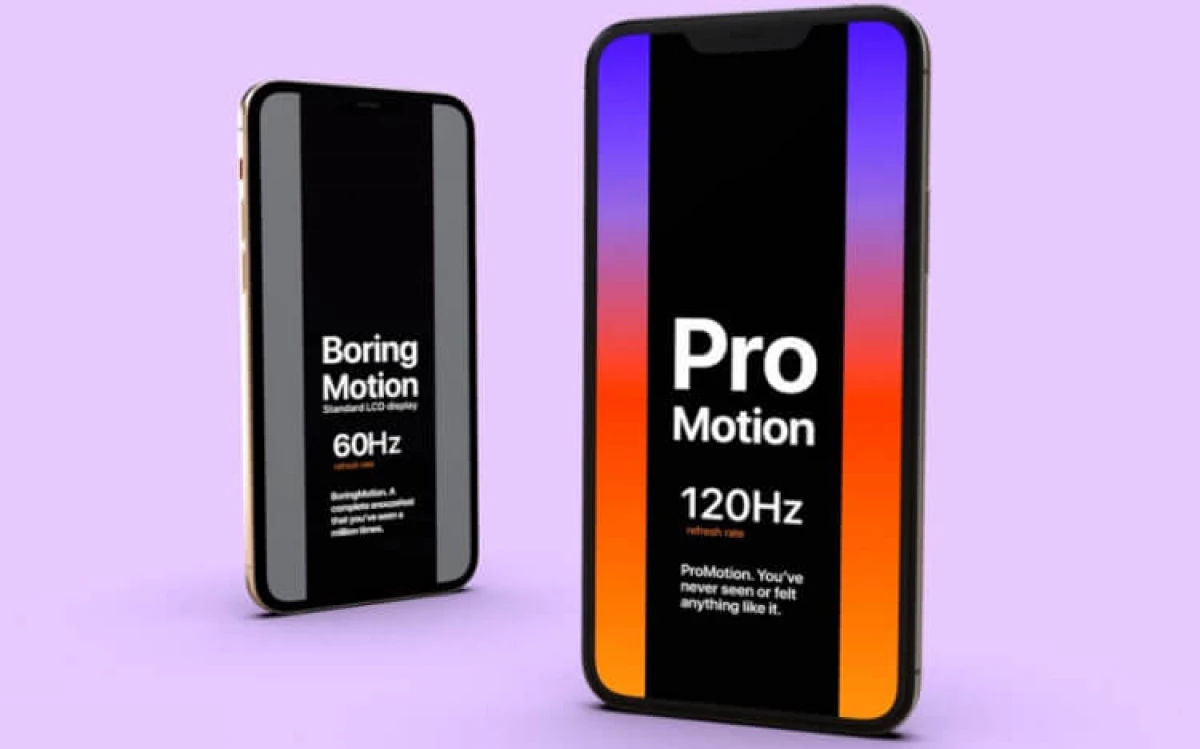On February 14, a whole work was known for the technical details about the iPhone 2021, and not only about him. One of them is to increase the screens update frequency in the new iPhone, Apple calls this function Promotion technology and uses it to iPad Pro since 2017. Competitors call it without poetic delights - a display with a 120 Hz screen update frequency, and for a year and a half you use this feature in the elite models of smartphones - to overtake Apple. But, Apple received a technology patent that competitors could call the display with a 240 Hz screen update frequency. Decided to step over one step?

What is a smartphone screen frequency
The essence of the technology is amazingly simple. With a standard scan frequency for each tact on it, the content of the video buffer is fully displayed. The standard sweep frequency (image update) is the frequency at which the image can be displayed on the specified permission screen. When doubling the sweep frequency, half the clock, the driver has time to display only half the buffer. The driver either jumps through the pixel string, or chooses their next portion in a checker order, no discomfort for the user occurs.In Patent 10,923,012, it is proposed to increase the frequency of the scan not only twice, but also in three or four.
The multiplier is selected by the user, in the system settings. This feature can be simply turned off. If the standard display frequency is 60 Hz (like iPhone and iPad displays), the actual frequency will be 60, 120, 180 or 240 Hz. If the standard frequency is 120 Hz, it can be increased to 240 Hz - although, it seems, there are no problems with an increase in it to 480 Hz. But technology developers, of course, more visible.
Why do I need a screen frequency 240 Hz

And what are these jumps on the contents of buffer give? Changes in the buffer are faster on the screen. Just 1/120, 1/180 or 1/240 seconds. The human eye does not see these intervals, but because of this image change (when scrolling, when watching a video or in some advanced game) perceived as smoother. At a frequency of 240 Hz, they will be twice as smaller than at 120 Hz (when using Promotion)? In the patent, mainly describes the implementation of all this at the level of shutter drivers and control signals - if it is interesting to you, the reference to the text of the patent is given above.
The main hero of the patent - iPhone. But the technology is developed for wider use, other types of devices are named in patent: tablets, smart watches, laptops, AR / VR headsets and smart glasses.
And even Apple car - but it is simply mentioned, without details and comments.
What is Promotion

The text of the patent never mentions Promotion - the official and marketing name of this technology since 2017. The second generation iPad Pro users (2017, in which Promotion debuted) and all subsequent generations of iPad level Pro call this technology almost invisible. Turning to other iPad models, where there is no Promotion (today - mostly on the fourth generation iPad Air), according to them, not noticeable any difference. The most attentive something was able to catch, but there is no guarantee that this is not self-deception.
The name of the technology looks solid, it has both "Motion", that is, "movement", and "Pro". To be honest, on the iPad Pro 2018, I also did not notice any special smoothness of the screen changes, nor the acceleration of his reactions. Maybe its advantages are manifested in some special cases? What do you think about this? Share in the comments and in our chat in Telegram.
Each month Apple serves hundreds of patent applications to the patent offices of different countries and receives one and two hundred patents. Inventions in patents and patent applications are interestingly interesting. The problem is that the described in them is almost never embodied in reality. But "almost never" and "never" is not the same thing.
